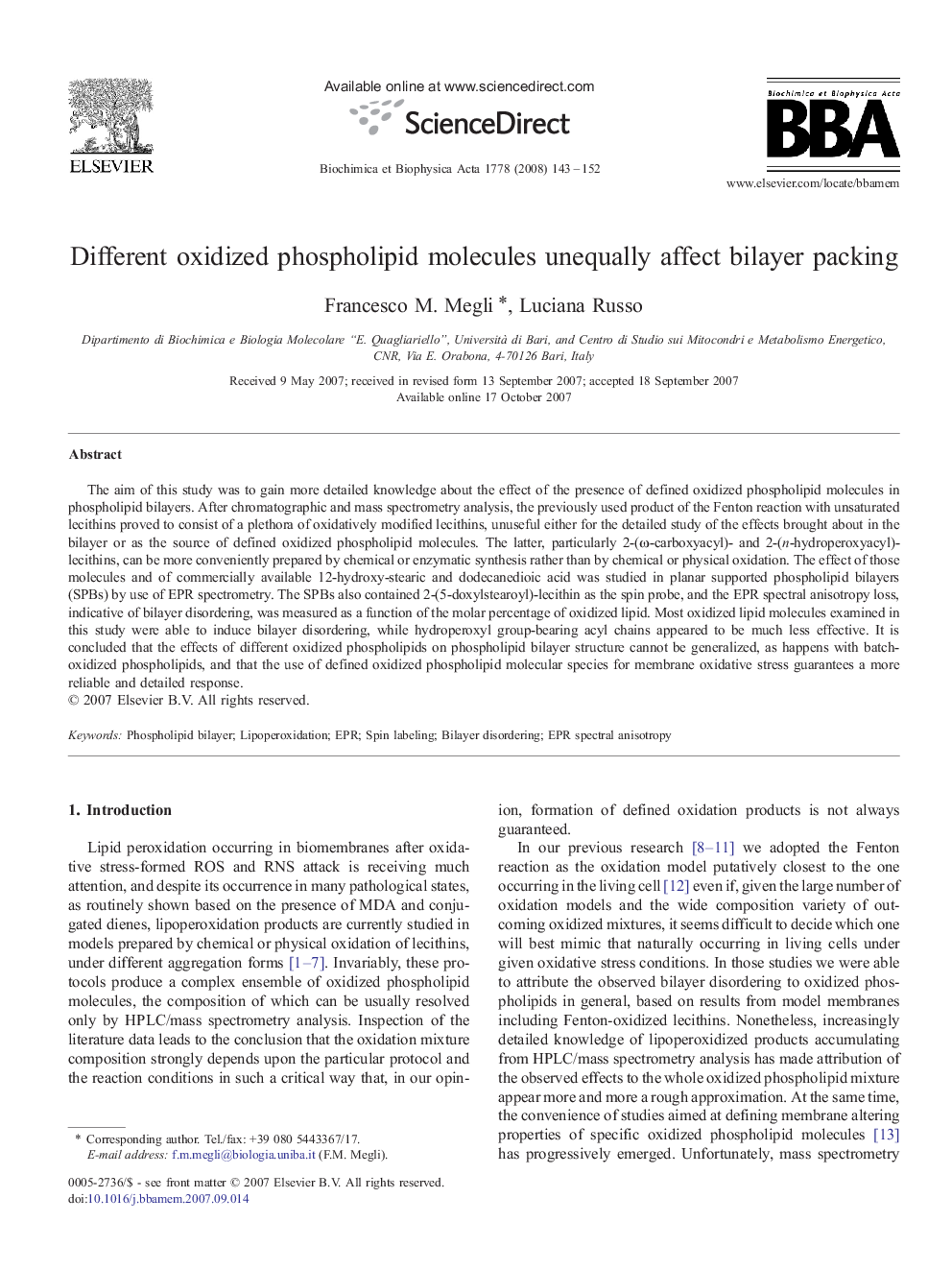| کد مقاله | کد نشریه | سال انتشار | مقاله انگلیسی | نسخه تمام متن |
|---|---|---|---|---|
| 1945554 | 1053268 | 2008 | 10 صفحه PDF | دانلود رایگان |

The aim of this study was to gain more detailed knowledge about the effect of the presence of defined oxidized phospholipid molecules in phospholipid bilayers. After chromatographic and mass spectrometry analysis, the previously used product of the Fenton reaction with unsaturated lecithins proved to consist of a plethora of oxidatively modified lecithins, unuseful either for the detailed study of the effects brought about in the bilayer or as the source of defined oxidized phospholipid molecules. The latter, particularly 2-(ω-carboxyacyl)- and 2-(n-hydroperoxyacyl)-lecithins, can be more conveniently prepared by chemical or enzymatic synthesis rather than by chemical or physical oxidation. The effect of those molecules and of commercially available 12-hydroxy-stearic and dodecanedioic acid was studied in planar supported phospholipid bilayers (SPBs) by use of EPR spectrometry. The SPBs also contained 2-(5-doxylstearoyl)-lecithin as the spin probe, and the EPR spectral anisotropy loss, indicative of bilayer disordering, was measured as a function of the molar percentage of oxidized lipid. Most oxidized lipid molecules examined in this study were able to induce bilayer disordering, while hydroperoxyl group-bearing acyl chains appeared to be much less effective. It is concluded that the effects of different oxidized phospholipids on phospholipid bilayer structure cannot be generalized, as happens with batch-oxidized phospholipids, and that the use of defined oxidized phospholipid molecular species for membrane oxidative stress guarantees a more reliable and detailed response.
Journal: Biochimica et Biophysica Acta (BBA) - Biomembranes - Volume 1778, Issue 1, January 2008, Pages 143–152